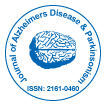æ们éå¢ç»ç»äº 3000 å¤ä¸ªå ¨çç³»åä¼è®® æ¯å¹´å¨ç¾å½ã欧洲åç¾å½ä¸¾åçæ´»å¨äºæ´²å¾å° 1000 å¤ä¸ªç§å¦åä¼çæ¯æ 并åºçäº 700+ å¼æ¾è·åæåå å«è¶ è¿50000åç¥å人士ãç¥åç§å¦å®¶æ ä»»ç¼å§ä¼æåã
å¼æ¾è·åæåè·å¾æ´å¤è¯»è
åå¼ç¨
700 ç§æå å 15,000,000 å读è
æ¯ä»½æå è·å¾ 25,000 å¤å读è
ç´¢å¼äº
- å¥ç½å°¼ç´¢å¼
- è°·æå¦æ¯
- å¤å°å·´·ç½å¯æ¬§
- æå¼ J é¨
- Genamics æåæç´¢
- å¦æ¯é¥å
- æåç®å½
- ä¸å½ç¥ç½ï¼CNKIï¼
- çµåæåå¾ä¹¦é¦
- åèæç´¢
- åå§è¾¾å¤§å¦
- äºå©æ¡é£å·EBSCO
- OCLC-ä¸çç«
- SWB å¨çº¿ç®å½
- èæçç©å¦å¾ä¹¦é¦ (vifabio)
- æ®å¸éæ¯
- æ¥å ç¦å»å¦æè²ä¸ç 究åºéä¼
- 欧洲é å§
- ICMJE
æç¨çé¾æ¥
å¼æ¾è·åæå
å享æ¤é¡µé¢
æ½è±¡ç
Oxidative Stress, Trace and Toxic Metal Levels in Alzheimer?s Disease in Sub-Sahara Africa
Ishiaq Olayinka Omotosho, Michael Roland Ngwube, Jibril Omuya AbdulMalik
Background: Alzheimer’s Disease (AD), an age-related neurodegenerative disease characterized by loss of memory has been attributed to oxidative stress induced by accumulation of Amyloid Protein (Aβ) in the brain; environmental and genetic alterations have been implicated as the pathogenesis of the disease. This work investigated levels of selected trace (Iron, Zinc and Copper) and toxic (Cadmium and Lead) metals in AD patients.
Method: In this case-control study, a total of 38 participants (aged>60years) consisting of 18 clinically diagnosed AD subjects and 20 apparently healthy age-matched adults were recruited from the University College Hospital Ibadan Geriatric Centre. Semi-structured questionnaire was used to obtain demographic information, clinical history, lifestyle and dietary patterns from participants. Blood levels of iron, copper, zinc, lead and cadmium were analyzed using Atomic Absorption Spectrophotometry (AAS); levels of Malondialdehyde (MDA), Total Antioxidant Capacity (TAC), Hydrogen Peroxide (H2O2), and Total Plasma Peroxide (TPP) were determined spectrophotometrically, while Oxidative Stress Index (OSI) and copper to zinc ratio (Cu:Zn) were calculated.
Results: Mean plasma level of zinc was significantly lower in cases (86.04 ± 11.07 µg/dl) compared to controls (108.80 ± 12.47 µg/dl), while blood lead (13.85 ± 2.96 µg/dl, 8.32 ± 2.10µg/dl) and cadmium (1.34 ± 0.71 µg/L, 0.71 ± 0.14 µg/L) levels were significantly higher in cases than in controls respectively. Although Fe and Cu levels were similar in cases and controls, Cu:Zn ratio was significantly elevated in cases compared to controls (p=0.000). Though other OS markers were not significantly different in both groups, TPP was significantly higher in cases [64.96 ± 7.20 µmol/ H2O2 vs. 55.41 ± 2.38 µmol/H2O2) while MDA correlated inversely with TAC in cases (r= -0.477, p=0.045).
Discussion: The low plasma Zn coupled with high blood Lead (Pb) and Cadmium (Cd) levels may precipitate the elevated TPP and Cu:Zn ratio in cases. The reduced metallothionine defense of the system as indicated by the elevated Cu:Zn ratio in cases may also exacerbate this problem.
Conclusion: The damaging effect of increasing toxic metal levels may be accentuating development of oxidative stress facilitating the progression of AD.

 English
English  Spanish
Spanish  Russian
Russian  German
German  French
French  Japanese
Japanese  Portuguese
Portuguese  Hindi
Hindi